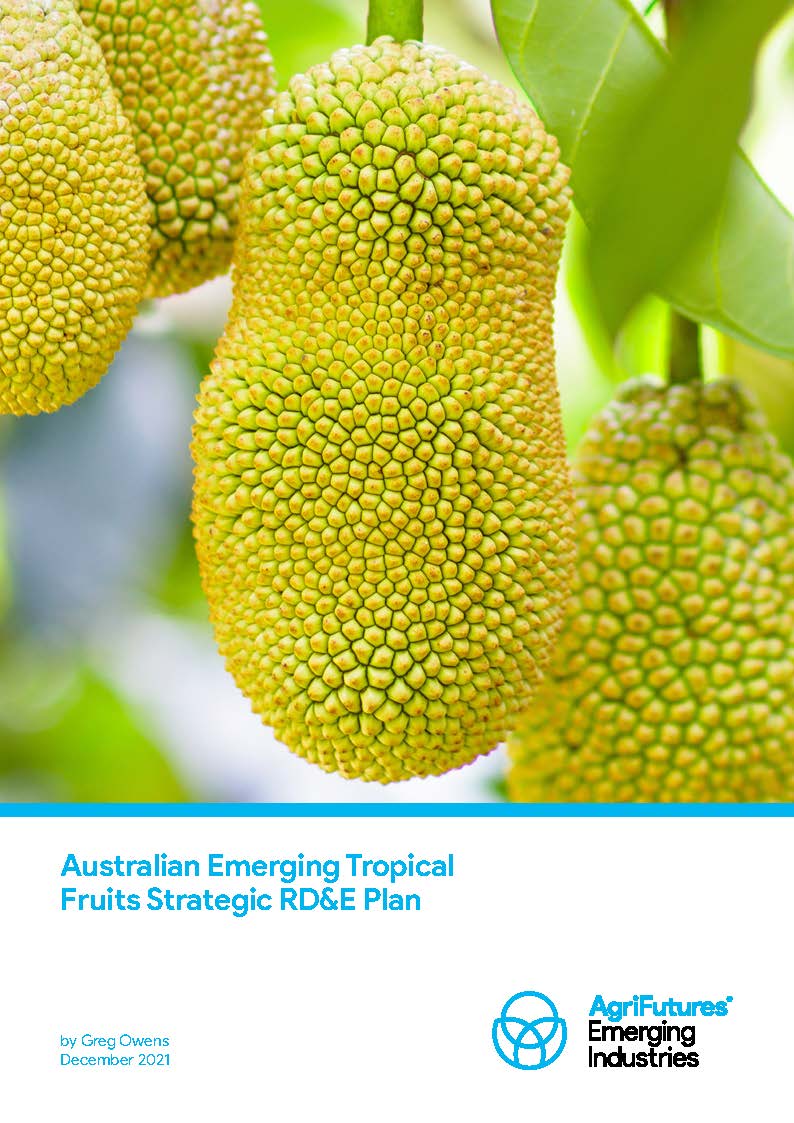Accelerating wattle seed production for the Australian native food industry
The Australian wattle seed (Acacia spp.) industry is poised for significant growth after the establishment of several commercial orchards in recent years. In 2020, about...

40 pages
Published: 17 Dec 2021
Author(s): Greg Owens
ISBN: 978-1-76053-230-7
Download report PDF
DownloadPurchase a hard copy - AUD $50
The Australian tropical fruit industry is highly diverse, growing more than 60 fruit species in a commercial or semi-commercial capacity, with most of the production occurring in tropical and subtropical regions of northern Australia – the Northern Territory (NT) and Far North Queensland (FNQ).
The industry has recently identified five emerging tropical fruits – jackfruit, rambutan, durian, dragon fruit and longan – as having significant growth potential. In 2020, both jackfruit and rambutan were estimated to have an annual gross value of production of more than $2 million, with dragon fruit at about $1.5 million. All fruits are at differing stages of industry growth; however all are showing positive signs of industry development across areas such as new market development, increased plantings, industry group formation and new research outcomes.
The development of a Strategic Research, Development and Extension (RD&E) Plan is a crucial first step in the growth of an emerging industry. This Australian Emerging Tropical Fruits Strategic RD&E Plan clearly identifies opportunities and barriers to industry growth, and subsequent RD&E priorities for the industry.
The Plan is the result of extensive desktop research and stakeholder consultation across the Australian tropical fruit industry and pulls together specific recommendations for future investment to support the long-term growth and competitive advantage of the Australian tropical fruit industry.
This Plan has been produced as part of AgriFutures Australia’s Emerging Industries Program, which focuses on new and emerging industries with high growth potential. Emerging animal and plant industries play an important part in the Australian agricultural landscape. They contribute to the national economy and are key to meeting changing global food demands.